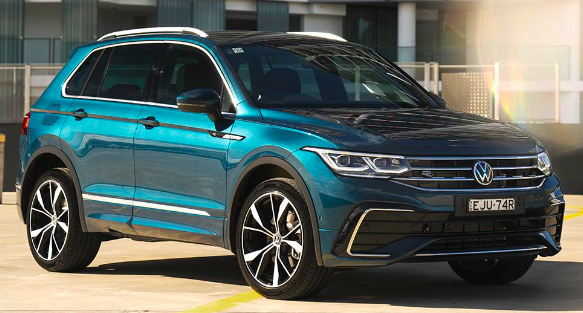When embarking on the journey to purchase a Volkswagen Tiguan, potential buyers often find themselves at a crossroad; a dazzling array of features, comfort, and chic aesthetics beckons them. However, lurking beneath the surface, certain model years might present hidden pitfalls worth examining. This comprehensive guide will delve into the specific years to avoid while purchasing a Tiguan and unearth the deeper reasons behind these recommendations.
The Volkswagen Tiguan, since its inception, has captivated the American market with its European flair, spacious interior, and reputation for quality. Yet, not all Tiguan models are created equal. Throughout its production run, a few years have garnered a notoriety that prospective buyers should heed. Understanding the nuances of these years may protect you from potential mechanical failings and financial burdens.
The initial model years of the Tiguan, specifically from 2009 to 2011, are often highlighted as years to circumvent. While they introduced the Tiguan to the American market, these vehicles suffered from a myriad of issues. Reliability was a considerable concern during these early production years. Reports indicate that several 2009-2011 models faced problems with the fuel system, including issues with the fuel pump and injectors. The costs associated with resolving these concerns can be substantial, erasing any initial savings on the purchase.
Moreover, these early models garnered complaints regarding their transmission systems. Some owners reported delays in shifting, rough transitions, and in a few unfortunate cases, complete transmission failures. Such deficiencies not only hamper driving experience but can also lead to expensive repairs that diminish resale value.
Fast forward to 2012, a watershed year for the Tiguan. This model received significant updates, ultimately hurting perceptions of earlier variants. However, it is prudent to approach the 2012 model year with caution as well. While many improvements were made, minor electrical issues have been noted. Owners reported problems with the infotainment system, a frustrating setback in an otherwise high-tech cabin. This faulty tech could lead to costly repairs and programming difficulties, leaving drivers yearning for a seamless experience.
As we navigate through more recent iterations, distractions from sporadic issues arise in the 2014 models. This year saw the introduction of advanced driver-assistance features, an upgrade that appealed to many buyers. Unfortunately, the incorporation of these new technologies sometimes led to compatibility issues. Drivers experienced glitches in adaptive cruise control and lane-keeping assist functions, raising concerns about the Tiguan’s overall reliability. Additionally, reports of excessive oil consumption appeared, necessitating frequent top-offs and potential engine complications.
However, it is not all woe and despair. Recent years have shown improvement in both the 2017 and 2019 models. By 2017, Volkswagen had implemented design changes that enhanced vehicle robustness. Yet, before sealing the deal, it is prudent to check specific recalls that affected this year, including issues with airbags and software malfunctions related to the rearview camera system. Staying informed about recalls will ensure that potential buyers are armed with pertinent knowledge before making a decision.
As new iterations enter the market, each model year grapples with the complexities of engineering advancements. The 2020 and 2021 models brought significant refreshes, with commendations for improved performance and innovative technology integration. Yet, no vehicle is infallible. Problems persist, such as occasional quality control mishaps that have incited customer dissatisfaction and identity crises for some owners.
Moreover, while the 2022 and 2023 models have largely been received positively, it’s important to remain vigilant. Newly introduced features, while exciting, may also introduce unforeseen challenges. Early adopters may encounter software issues that can detract from the passionate driving experience VW aims to deliver. Such drawbacks serve as a poignant reminder of the complexities inherent in modern automotive technology.
Moreover, when contemplating the purchase of any used vehicle, regardless of model year, always take stock of the vehicle’s maintenance history. A thorough vehicle inspection can uncover signs of wear and tear, while a detailed service record might illuminate past issues. These insights become particularly critical with the Tiguan, acknowledging that a once-reliable model could harbor hidden troubles. Additionally, engaging in a comprehensive test drive is instrumental. Pay attention to its performance, handling, and the functionality of tech features. They are usually the selling points of the Tiguan and should always work as promised.
In the quest for selecting a Volkswagen Tiguan, it is vital to remain informed about both the alluring strengths and notable weaknesses of specific model years. Gleaning insights from existing owners and automotive reviews will enhance this knowledge and guide you towards making a wise investment. Knowledge are your ally as you navigate the automotive landscape; ensuring that your choice aligns seamlessly with your lifestyle and expectations is essential.
In conclusion, while the Volkswagen Tiguan presents an enticing option in the compact SUV market, awareness of the years to avoid provides a pivotal advantage for prospective buyers. Rather than becoming ensnared in the charm of its design, conduct methodical research and engage in informed decision-making to circumvent potential pitfalls. Ultimately, understanding the intricacies of this beloved vehicle can transform your purchase from a mere transaction into a gratifying journey.
